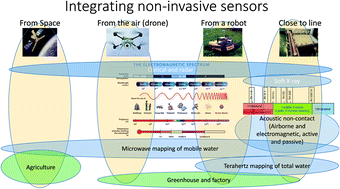Non-invasive sensing for food reassurance
Abstract
Consumers and governments are increasingly interested in the safety, authenticity and quality of food commodities. This has driven attention towards non-invasive sensing techniques used for rapid analyzing these commodities. This paper provides an overview of the state of the art in, and available alternatives for, food assurance based on non-invasive sensing techniques. The main food quality traits of interest using non-invasive sensing techniques are sensory characteristics, chemical composition, physicochemical properties, health-protecting properties, nutritional characteristics and safety. A wide range of non-invasive sensing techniques, from optical, acoustical, electrical, to nuclear magnetic, X-ray, biosensor, microwave and terahertz, are organized according to physical principle. Some of these techniques are now in a period of transition between experimental and applied utilization and several sensors and instruments are reviewed. With continued innovation and attention to key challenges, such non-invasive sensors and biosensors are expected to open up new exciting avenues in the field of portable and wearable wireless sensing devices and connecting with mobile networks, thus finding considerable use in a wide range of food assurance applications. The need for an appropriate regulatory framework is emphasized which acts to exclude unwanted components in foods and includes needed components, with sensors as part of a reassurance framework supporting regulation and food chain management. The integration of these sensor modalities into a single technological and commercial platform offers an opportunity for a paradigm shift in food reassurance.

- This article is part of the themed collection: Detecting food authenticity and integrity

 Please wait while we load your content...
Please wait while we load your content...